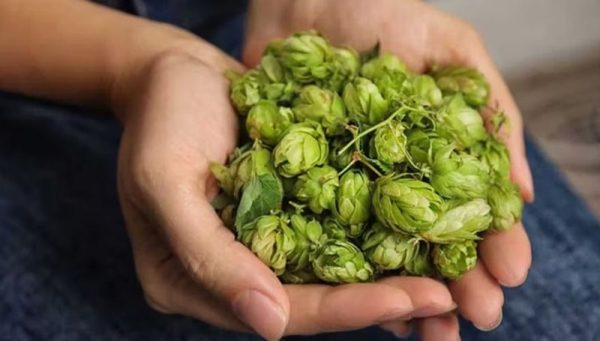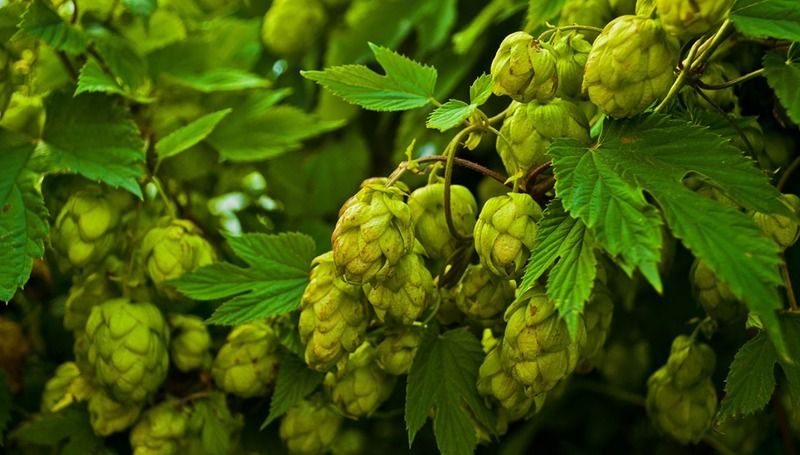Cannabis terpenes have recently received a lot more attention. They contribute to the distinct tastes and effects of different cannabis strains. They also have a number of health and wellness advantages to offer. You can buy more products in our boutique.
Today, we’ll look at one of the most prevalent cannabis terpenes: humulene. We’ll go through its effects and where to find it, as well as some of the best humulene-rich strains.
What Is Humulene?
Humulene is a type of terpene, and it’s specifically a sesquiterpene. These chemicals play an important role in cannabis plant protection against pests and illnesses. They’re generally strongly scented and contribute to the variance in distinct marijuana strains’ tastes and effects.
Have you ever come across a cannabis chemovar that smells like hops? You’ve probably smelled the terpene humulene (also known as alpha-humulene) if this is the case. It’s present in various plants, including hops and marijuana plants, and it’s a terpene. Terpenes are one of many aromatic compounds found in plants that give them their distinct characteristics.

Terpenes are abundant in cannabis plants’ resinous glands (trichomes), and they contribute to the chemovar’s distinct characteristics. Alpha-Humulene (sometimes known as alpha-caryophyllene) is structurally similar to another popular terpene, beta-caryophyllene, but their names are merely a vestige of historical nomenclature that has nothing to do with their chemical composition.
The aroma is said to be earthy, spicy, herbal, and, of course, hops-like. Humulene may be found in haut amounts in hop essential oils. Cloves, basil, sage, spearmint, black pepper, balsam fir trees (also known as spice cedar), ginseng (also known on as Asian ginseng), and ginger are just a few examples of rich natural sources.
Humulene has medicinal properties, but it’s crucial to remember that most of the scientific knowledge on the subject is based on isolated humulene. While this may be used as a basis for further study, there is no scientific evidence yet that humans or humulene-dominant cannabis chemovars react in a certain manner.
Current Research
Humulene’s medical uses are still being studied. It’s important to remember that the qualities of humulene aren’t the same as those of cannabis-containing humulene. While high amounts of humulene alone may have some therapeutic effects, there is no evidence that adding low levels of humulene to cannabis transmits any of those potential benefits when it is smoked or ingested.
As an anti-inflammatory/steroidal medication, it may be useful. In a murine model of airways’ allergic inflammation, α-Humulene exhibited anti-inflammatory properties in a 2009 study. Another 2007 investigation compared its anti-inflammatory activities to those of the steroidal medication dexamethasone.
Humulene’s ability to reduce appetite is another popular topic of discussion. Many people believe that the terpene is an appetite suppressant that may aid in weight reduction, yet no study has been conducted or reviewed.
Humulene has also been shown in studies to help with the formation of reactive oxygen species (ROS). ROS imbalances are linked to disease conditions including age and diabetes. It’s worth noting that smoking or vaporizing cannabis strains increases levels of ROS, which the terpene components may not be able to compensate for.
Fir balsam oil, according to a 2003 study that looked at fir balsam oil’s antitumor activity, is effective against all solid tumor cell lines tested. “All the chemicals examined were inactive,” the researchers observed, “except for alpha-Humulene…which appears to be causing the toxicity of the oil.”
Insect Repellent Properties
Terpenes are a defensive mechanism generated by plants to repel insects. Humulene is especially relevant in this situation since research have shown that this terpene is an effective mosquito repellent. In 2015, researchers sought to determine the effectiveness of Commiphora leptophloeos leaf oil against “the yellow fever mosquito,” A. aegypti. The researchers discovered α-Humulene to be one of the major components in the oil. They determined that its presence, along with other terpenes, “…was likely responsible for at least part of the negative effet.” The scientists concluded that “the oil’s deterrent activity was one of the most potent reported thus far, implying that it may be used as an alternative to synthetic pesticides.”
The Best Humulene Rich Strains
If you are a medical marijuana user who is experiencing inflammation, it would be worth your time to test the humulene effects for yourself.
Choose for a souche that has a lot of this terpene, since you’ll need to pick one. Here are some of the most humulene-rich strains available today.
- Girl Scout Cookies: The Humulene content of this strain is about 2.45 percent, which makes it one of the most potent around. Girl Scout Cookies has an average THC level of 17% and traces of CBD.
- Thin Mint Girl Scout Cookies: Thin Mint GSC is a mix of Girl Scout Cookies and Thin Mints, as the name implies. It’s a bit more balanced than other Girl Scout Cookie varieties, with a 50/50 indica to sativa ratio. It has about 2.35% humulene and an average potency of 20% THC.
- Sour Diesel: Sour Diesel, with a 90 percent sativa component, is the most sativa-leaning strain on our list. It has a significant amount of THC and roughly 1% humulene. Its CBD content is unknown, though it’s likely to be minimal.
- Candyland: If you like a sweeter flavor, Candyland is an excellent choice. It’s 70% sativa-dominant and has about 0.75 percent humulene. THC levels in the strain average at a mild 14%, making it good for novice consumers. Its CBD content is usually less than 1%.
- Sherbet: The final Humulene-rich strain we’re looking at is Sherbet, which is a delicious sweet option for cannabis fans. It contains approximately 0.48 percent humulene, 20% THC, and 1% CBD.
Other Sources of Humulene
Humulene may also be found in several herbs and spices, including cannabis. Hops, a popular component of beer-making, are one of the richest sources. Cannabis and hops are both members of the Cannabaceae family, which gives some clue to their names.
Some other familiar sources of humulene include:
- Sage
- Ginger
- Black pepper
- Cloves
- Vietnamese coriander
- Ginseng
Adding more of these foods to your daily diet could help you get more of this essential oil.
Final Thoughts on Humulene
Humulene is a crucial cannabis terpene. Anti-inflammatory, antioxidant, and antibacterial effects are among the advantages it has potential.
Humulene has yet to be studied extensively in people, however most of the research on humulene so far has focused on animals rather than humans. As a result, additional research is required to establish the clinical usefulness of this chemical.

